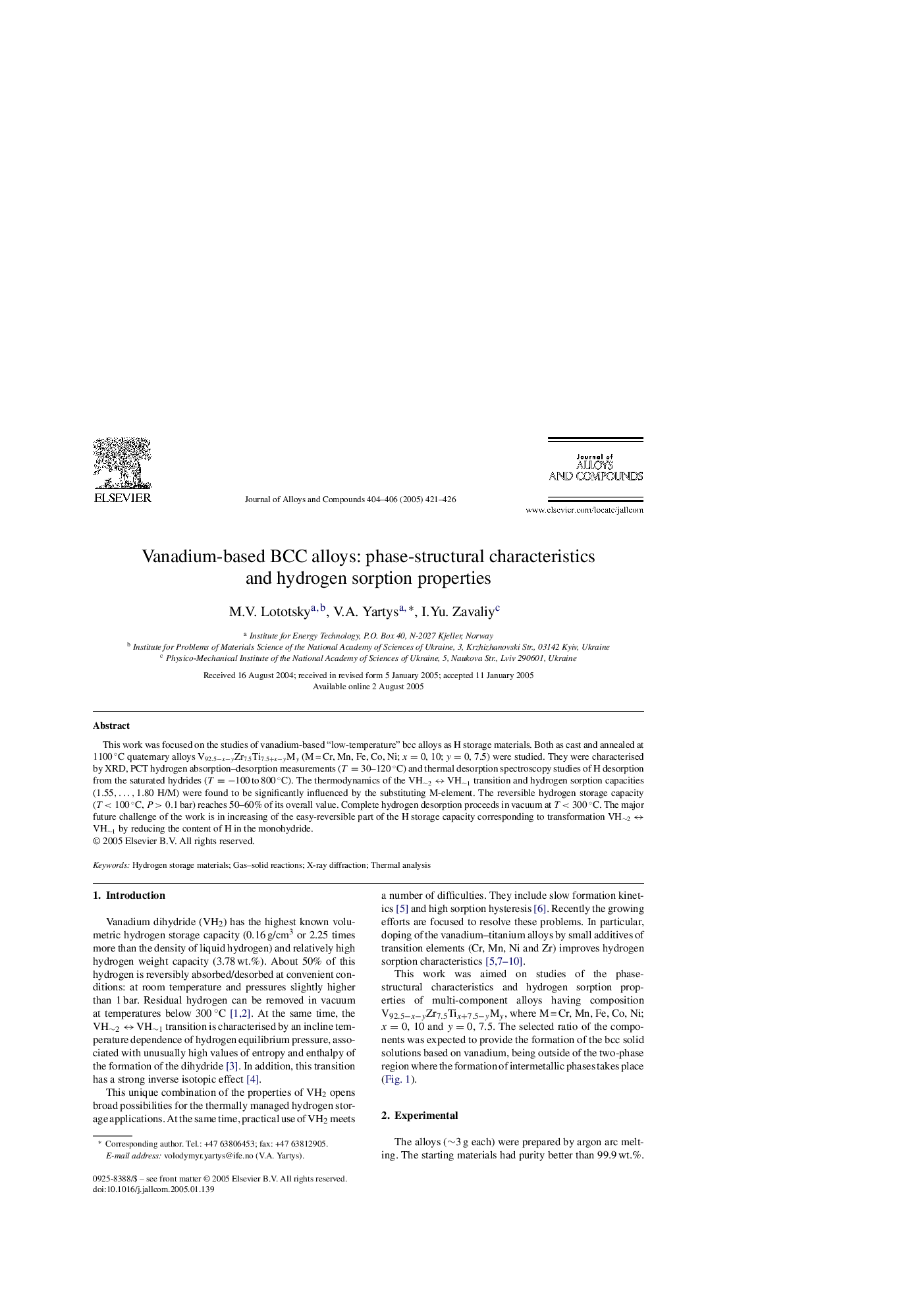| Article ID | Journal | Published Year | Pages | File Type |
|---|---|---|---|---|
| 9803247 | Journal of Alloys and Compounds | 2005 | 6 Pages |
Abstract
This work was focused on the studies of vanadium-based “low-temperature” bcc alloys as H storage materials. Both as cast and annealed at 1100â° C quaternary alloys V92.5âxâyZr7.5Ti7.5+xâyMy (Mâ=âCr, Mn, Fe, Co, Ni; x=0, 10; y=0, 7.5) were studied. They were characterised by XRD, PCT hydrogen absorption-desorption measurements (T=30 -120â° C) and thermal desorption spectroscopy studies of H desorption from the saturated hydrides (T=â100to800° C). The thermodynamics of the VHâ¼2â VHâ¼1 transition and hydrogen sorption capacities (1.55,â¦,1.80 H/M) were found to be significantly influenced by the substituting M-element. The reversible hydrogen storage capacity (T<100° C, P>0.1 âbar) reaches 50-60% of its overall value. Complete hydrogen desorption proceeds in vacuum at T<300° C. The major future challenge of the work is in increasing of the easy-reversible part of the H storage capacity corresponding to transformation VHâ¼2â VHâ¼1 by reducing the content of H in the monohydride.
Related Topics
Physical Sciences and Engineering
Materials Science
Metals and Alloys
Authors
M.V. Lototsky, V.A. Yartys, I.Yu. Zavaliy,
